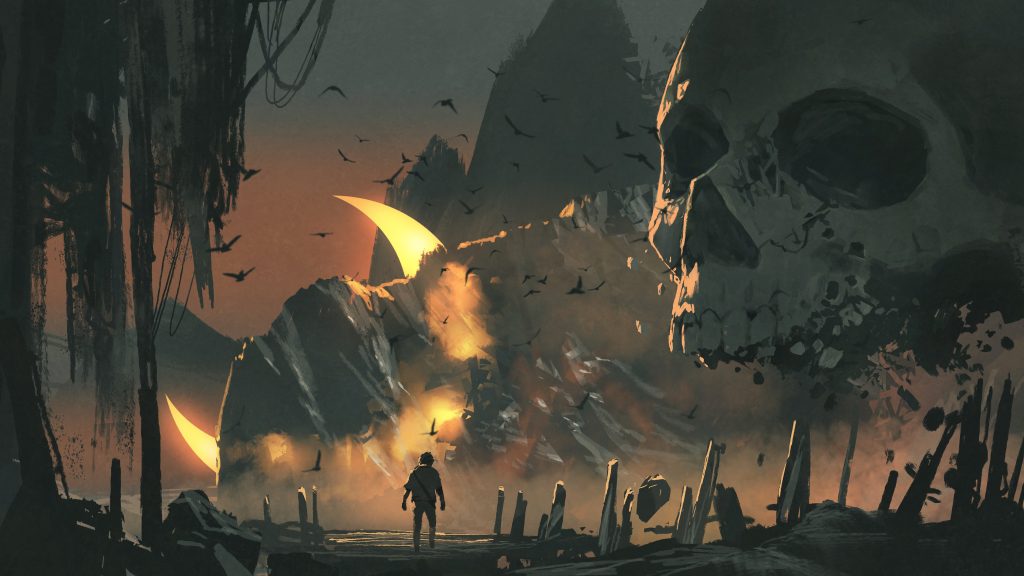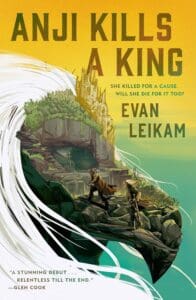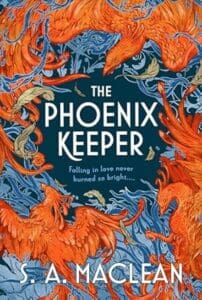
What are the key elements to building a world readers want to live in themselves?
When I think of the fictional worlds that I love the most, worlds that had me wanting to revisit them long after I closed the last page of the book, I don’t necessarily remember all the details of world-building that the author must have painstakingly built and figured out. I think of the feelings that the world elicited as I was reading the book. As an author, I want my readers to have similar feelings when they’re reading (and let’s be honest, I want to experience those feelings when I’m writing too!). So, I’d like to take some time to look into some of the most vivid experiences I remember about those fictional worlds I love and why they stand out. Basically, I’m going to try to pinpoint a few major elements that I think a story should have in order to elicit those feelings that make me want to revisit a world.
The world should feel vast
Middle-Earth is, for me, the obvious example here. Yes, there are specific things about the world, specific details and places and people that made it awesome, but what really gave me that feeling of total immersion (of sinking into Middle-Earth as I read the book and wanting to go back to it later on) is how vast it felt.
I’ve read many hundreds of books trying to get that same level of immersion and amazing world-building I had with Tolkien’s worlds and the only ones that really do that also have that sense of a huge scale. All of these works included vivid, bright images of various different locations that the characters visited on the page but also gave enough little details and hints that there was more. More to learn about and more to explore later on.
It’s not just about Rivendell and Minas Tirith, though. It’s also about the space in between. The woods and roads and rivers and difficult paths that separate them are just as important for giving that sense of scale to the world. Traveling can help with this. And yes, I know it’s a bit of a joke that almost all they do is travel in The Hobbit and LoTR, but maybe that’s the point. It’s a journey that gives you a sense of the scale and wonder of Middle-Earth and makes you want to have your own journeys in that world.
And the space between the different locations isn’t just about the physical distance. There should be differences between them that set them apart from each other. Differences in architecture, food, how things are done, etc. When you think of Rivendell and Minas Tirith, you’re not imagining similar things at all!
There should be room for quiet and comfort in the world
So the world is huge, with some different and excellent locations, and the characters are traveling to get from one place to another, which is hard. There should be room, in this world, where they can rest, where they can find comfort and get a break. The Inn is something of a fantasy cliché by now, but I think what’s often forgotten when people use these same types of landmarks is that it’s not the building that’s important; it’s what it represents to the characters.
When the Hobbits arrived at the Inn in Bree, they got there after a harrowing journey whilst running from the terrifying Black Riders. They were afraid and didn’t understand what these riders that were chasing them really were and needed comfort. They hoped to find Gandalf there. They hoped that it would be safe. They were still a little on edge and afraid. It’s all those feelings that made the Inn in Bree iconic and important to the story. So, your world doesn’t have to have an Inn, but it should have a place that can represent similar things to the characters.
This reminds me of another key moment of relief/comfort in Lord of the Rings, one that didn’t make it to the movie in the same way as the books. After the Hobbits meet Strider and encounter the Black Riders again on Weathertop, and after Frodo’s been stabbed and Strider realizes he can’t heal him, they’re basically running for their lives and at the same time trying to keep Frodo alive long enough to get him help. In the book, this is when they hear the bells jingling in the harness of Glorifindel’s horse. It’s a happy sound that kind of jolts them out of the fear and desperation they were in and gives them hope, letting them know that an Elf who can help them is there and they’ll be ok. At that moment in the book, those bells jingling represented that comfort and relief after a harrowing journey. Comfort that they found in a person rather than a place in this case.
Daniel E. Olesen does this really well in his Chronicles of Adalmearc with certain characters. One of the main characters is this innocent, young noblewoman who has fallen in on hard times and she’s alone in the city among all these scheming, bloodthirsty nobles, and the only form of relief she gets is from an older woman who is also a schemer in her own way, but who takes a liking to her and becomes kind of a mentor/protector for her. That relationship was really important in giving that character, who is constantly surrounded by danger, a little bit of relief.
Another example is from A Wizard of Earthsea, another classic I recently re-read. I’m going to be honest, I didn’t really love the world-building in this, but there was one section that stood out to me a little bit as a ray of sunshine of good world-building. It was when Ged went to visit Vetch in his house and met and interacted with Vetch’s younger siblings. Nothing exciting happened there. I also didn’t really care about his quest or the danger he was in at the time, so it’s not even the same sense of relief I got from the other examples, but I think it was the sheer normalcy of these interactions that made them stand out.
After all, Bilbo’s famous song says “Home is behind, the world ahead” so there needs to be a normal, comfortable home for the characters in the world no matter what cool locations and cities and battles and magical academies they go to. And that home, or comforting place or person, can form the basis of the character’s attachment to their own world and the basis of our investment in it as readers.
Take time to explore the world through the eyes of the main characters
One of the things that stands out most to me from the excellent Agartes Epilogues trilogy by K. S. Villoso is one character’s need to protect a young child and keep their found family together. There were cool characters in that book (chief among them were powerful wizards and sword-wielding fighters) and at times there was a lot of action – potentially world-ending danger – but what I cared about most as a reader was that this one character would be ok. The people he wanted to protect, the places that mattered to him and the places where he had moments of happiness. They stand out so vividly for me when I think of that world, and it’s actually that character’s struggle to hold on to what he loves that makes me want to dive back into that world.
So, I think the character’s connections to the fictional world are what make it really come alive. The love, longing, hope, pain, and all the rest of the experiences the character has. The way they feel about the different parts of the world around them. All those things can help create a sense of immersion for the reader and make them feel similar things and want to visit that world again and again.
A Wizard of Earthsea is sometimes quoted as a precursor to Harry Potter because Ged went to school on Roke, just like Harry Potter went to Hogwarts, but in my opinion the reason so many people’s imaginations were captured by Hogwarts – the reason people wish for their Hogwarts letter and no one really tells you they wish they could go to Roke – is because of the time the characters spent there and their connections to it. The Wizard school wasn’t really the point of A Wizard of Earthsea, and although it existed and the character spent about four years there learning things, the reader only spent a chapter or two of the book there. Compare this to Harry who not only saw Hogwarts as a place of learning, but literally a safe haven where he could escape the abuse of the Dursleys. Compare the two chapters spent on Roke to the fact that almost 90% of each Harry Potter book (except the 7th) was spent within the walls of Hogwarts. The readers followed Harry through his classes, his late-night adventures in the parts of the school he wasn’t supposed to go to, his elation as he played Quidditch and found something he could excel at, and his explorations of the secret tunnels and hidden rooms of Hogwarts. We know Hogwarts and we know how Harry felt in his time there, so naturally. we want to experience that too.
So, to conclude after this little thought-experiment, I’d say the key to building a world that the readers want to live in is to take the time to let the readers experience it fully through the eyes of the characters. Don’t forget to take the readers on the journey with all its ups and downs, including the quiet moments in a cozy home or safe haven. Don’t forget to bring the reader along for the ride in the character’s struggles within that world so the reader can feel as connected to it as the characters, even if this means spending time on day-to-day things that don’t feel very cool or large scale, even if it’s just traveling in the woods. Remember to show the reader what the characters love about that world, what they want to protect and what they long for, and don’t forget to drop a couple of little hints that there is more to that world than what’s on the page; more to sink into and explore!
Huge thanks to FanFiAddict for the thought-provoking prompt and for giving me the opportunity to explore it in this guest post. If you enjoyed this content, check out more through the following links:
![Children of the Dead City by [Noor Al-Shanti]](https://fanfiaddict.com/wp-content/uploads/2021/09/413PLMGw8L.jpg)
My epic fantasy novel Children of the Dead City: https://books2read.com/u/bQ6Yqd
Website: https://www.talesfromthecircle.com/
Twitter: https://twitter.com/IIronglove
Goodreads: https://www.goodreads.com/author/show/15718143.Noor_Al_Shanti




Leave a Reply